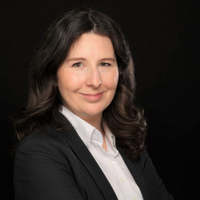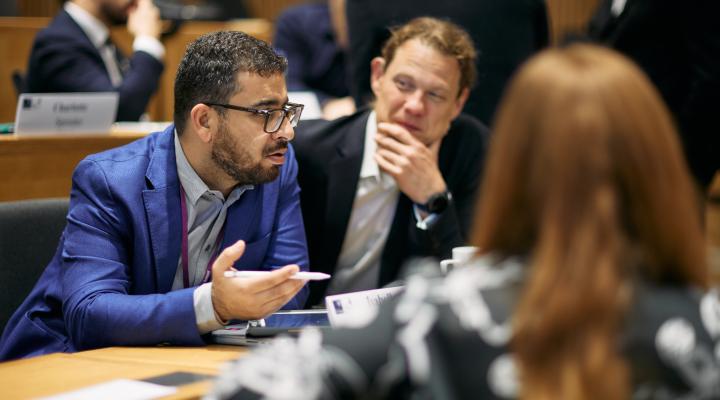I began my studies at Oxford with a lot of questions and hoping that I made the right choice.
I’m not from a typical business background, like some of my cohort peers, and I work for a mission-focused organisation.
On the first day of the Executive Diploma in Strategy and Innovation programme, our Academic Director, Tim Galpin, asked us to raise our hands if we considered ourselves to be good with numbers and analytical, or more creative thinkers. I didn’t raise my hand either time as I felt I was a bit on the fence – I’m a little bit of both. What he then said really stuck with me: ‘good strategists bring both sides’.
In that moment, I knew I was in the right place, and began to truly grasp the potential of good strategy and the impact it can have on any organisation.
At the time, I understood strategy to be the basis for the direction of a project or an organisation, building on the past and driven by asking fundamental questions about the future. I do quite a bit of strategy in my job at the United Nations, and support organisations around the world to develop their own strategies as well, so it was more within my comfort zone. Innovation, initially felt a little less tangible to my work, and one of my main objectives for studying the programme was to learn about the range of innovative thinking, from big tech to community levels, and how to integrate strategy and innovation harmoniously as part of the field projects I am involved in.
Module one was a ‘eureka!’ moment for me. Whilst I was aware of how to use the SWOT and PESTEL frameworks for analysis, all the others we learnt during the first module were absolute gold and very practical. I’m now equipped with many different ways to approach strategies and make strategic decisions. The challenge now is to select what tools to use from this gold mine – a task that I’m excited about. There’s no fixed approach and the treasure trove of tools means that you can combine different concepts to tailor your approach to the problem you are trying to solve, in a way that delivers a useful, practical solution.
My two key takeaways from the first module were:
1. Implementation is key!
This was neatly summarised in Tim’s own words: ‘The best strategy is the one you can implement.’ Having your strategy is wonderful, but it’s worthless if it’s not useable and implementable. I see an intersection here with innovation: thinking about how you can execute your strategy in a creative way. I’m looking forward to learning more about how to successfully innovate in the next module.
2. Innovation isn’t necessarily a big, intimidating concept
I work with many developing countries that don’t necessarily have a lot of resources, let alone resources to innovate in the big sense of the term. When we talk about innovation it’s easy to immediately think of technology and that can be a bit overwhelming and off-putting in the contexts I work in. But really, it’s about improvement and adopting an open, growth mindset to solve a challenge, and then distilling ideas into meaningful and achievable actions. When I translate it like this now, I feel that I’m better set to bring my counterparts along the journey with me when devising innovative strategies.
Since beginning the programme, my understanding of strategy and innovation and the relationship between the two has changed, and for the better. Similar to my view before, strategy is the way you think about your organisational and programme objectives and achieving them in a systematic way that can be sustained over time: it’s the journey you go on to achieve your goals. But now, innovation, for me, is about applying a new mindset to an existing problem - thinking creatively, outside the box and generating a vision for what success looks like. They work hand-in-hand. The Diploma in Strategy and Innovation marries these concepts together perfectly, revealing the interfacing that occurs between the two and equips you with the frameworks and tools to deliver successful products and services, whichever industry you’re in.
I am now driven to be more innovative in my role to help improve the quality of life for people across the world. And I’m really fortunate that I have the chance to contribute to that goal every day. Each country’s context is different, so I need to work in that space between using established tools to set a strategic direction while innovatively tailoring strategies to each context. The Diploma is helping me understand that space more clearly.





